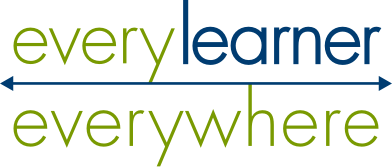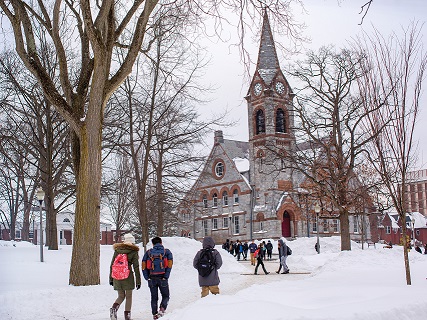When the disruption of the COVID-19 pandemic began to impact the University of Massachusetts Amherst campus in March 2020, the institution was able to draw on a comprehensive continuity planning tool that had been in place since 2014.
UMass Ready is a framework for academic continuity that includes an instrument that individual departments use to identify their particular needs in case of a disruption. Previously, the plan primarily outlined responses to severe weather events that would close campus like blizzards as well as more “everyday” disruptions — an instructor or other key personnel is away unexpectedly or a building is unavailable because of a power outage.
Essentially, the instrument asks departments to imagine that key facilities, people, systems, or resources aren’t available, whatever the cause. What would need to be done to bridge the gap? What alternate facilities would the department require? Who has the authority to delegate responsibilities or sign approvals? Are there sensitive machines that need to be checked? What students or faculty are working abroad or otherwise off campus? What communications have to go out, and who has the necessary access?
Individual academic departments — as well as units in student affairs, operations, and other services — used the instrument to inform appendices to the comprehensive institutional plan comprising UMass Ready. “The tool is helping folks forward-think some of the things they have to do,” says Jeff Hescock, Executive Director of Environmental Health and Safety and Emergency Management and Co-director of the Public Health Promotion Center at UMass Amherst.
“They’re typing out certain things, but we are the ones actually helping them create their plan. It’s not just ‘Insert department name here.’ I don’t know what I don’t know. You’re the expert at how you’re teaching your course. The difference between an engineering class and a music class is going to be night and day in terms of the resources they need.”
Another day, another disruption
The question of continuity addressed by UMass Ready can be more mundane than the word “emergency” suggests. For example, on the day Hescock gave this interview, he was dealing with a power outage in one of the four campus dining halls and a flood in an academic building.
“Quite frankly, in some respects it doesn’t matter what the cause is,” Hescock says. “It’s not the effect. We take an all-hazards approach with our plans.”
The effect on this day is that a dining hall couldn’t open for breakfast and a lecture hall was unavailable for a scheduled class. The solution for the first challenge was extending hours in the other dining halls. Not feeding a quarter of the students for a day wasn’t an option.
The later challenge did offer options: cancel class, find an alternative space for that day’s class meeting, or something that was far less common before March 2020 — shift on short notice to remote learning.
Related reading — The Role of Digital Learning in Academic Disruption: Lessons from UCF’s Experience With Hurricanes
Pandemic response
Even though a pandemic was one of the imagined scenarios in the continuity planning instrument, Hescock says, “I’d be stretching it to say that was the number-one thing people looked at.” Users gravitated to problems that might last a few days — the internet is out, the electricity is out, or a blizzard closes the roads.
Still, the process of developing UMass Ready for individual departments in the years prior to the pandemic gave the institution a head start responding to it, as did a meningitis outbreak on campus in 2017. Departments already had experience thinking through questions about how long a given activity could be delayed and what personnel were needed.
With the planning framework created by the Emergency Management and Safety office in place, the process of shifting to online learning was led by the Provost’s Office, Hescock says: “That was a huge undertaking to pivot to online learning within a couple of weeks, and they did a remarkable job.”
UMass Ready continued to guide academic and operational planning for the fall of 2020, with its mix of social distancing and greatly expanded remote learning. For example, the decision was made that Chemistry 101 lab courses needed to run in person, but lab spaces had to be limited to fewer students. Fewer people in the same spaces meant more sections had to be on the schedule, which created a new hiring challenge.
“The biggest questions go back to staffing,” Hescock says. “What is the true minimum number of people you need to continue something? We had looked at it more from a people perspective than an IT perspective. In order to run, you need 20 people, but what if we don’t have 20 people right now? [The advance planning] led us down that path, which was very helpful.”
Moving into the fall of 2020, IT infrastructure did become a bigger part of resource planning for online courses, says Hescock: “When we walked through the checklist at that point, we didn’t worry about where your alternate facility is. We need to understand what additional capabilities you’re depending on. If everybody was checking the box that they need a certain system, that allowed us to say we need to go to the gold version to allow that many users.”
Complexity and continuity
The instrument used for the departmental-level appendices to UMass Ready can be thought of as a discovery tool that reveals the extraordinary variety of activity on a campus of more than 30,000 students. At a research university like UMass Amherst, there is something unique behind almost every door, because part of the mission is “pushing the envelope and going beyond,” says Hescock.
For example, one building at UMass Amherst — The Institute for Applied Life Sciences — is filled with startup businesses that are commercializing bench research, each with their own facilities and requirements. Other biological science facilities can have everything from fruit flies to livestock that need tending. Historic materials in art and library collections may need specific regular care. Supercomputers in other labs may be running processes that shouldn’t be interrupted. Students and faculty in the social sciences may be conducting field work off campus that is time sensitive.
“The more the departments tell us, the better we can help prepare,” Hescock says. “‘I never knew you had that piece of equipment. You know what? You should have an [uninterruptible power supply] on that.’ That conversation can save somebody’s research. If that’s all that comes out of it, that’s a success.”
Knowing what is essential
Hescock says that at UMass Amherst, like most institutions, everyone is now better prepared to teach online when it’s not safe or feasible to get to campus. It’s the “no more snow days” effect. Similarly, a flooded lecture hall doesn’t have to mean a disruption in teaching and learning.
More comprehensively, everyone is better prepared for emergencies of any kind. “The pandemic was the biggest continuity event you could have, because it pushed the envelope in terms of technology and making sure it could work,” Hescock says. “It emphasized what is essential that we need to continue.”
An emergency is partly a problem of gathering and sorting information in a compressed time frame when communication is uncertain. Not every question can be answered in advance, but preparedness planning — and the experience of the pandemic — increased the amount of information that is already at hand and ready to use. That institutional knowledge gives the college or university a head start responding to the next emergency.
“Our mission is to support our students, our faculty and staff, and the research,” says Hescock. “If you don’t practice, you’re not prepared for game day. It doesn’t matter how big or small you are, things are going to happen. The more prepared you are, the more resilient you are.”
This article is included in Leveraging Digital Learning in Times of Academic Disruption: A Guide for Academic Leaders, which presents results from an analysis of 100 academic continuity plans at U.S. colleges and universities. The results form the basis for recommended academic continuity plan best practices, tools, and templates academic leaders can use to maintain a plan that can be used in both short-term and long-term circumstances.
Download Leveraging Digital Learning in Times of Academic Disruption

